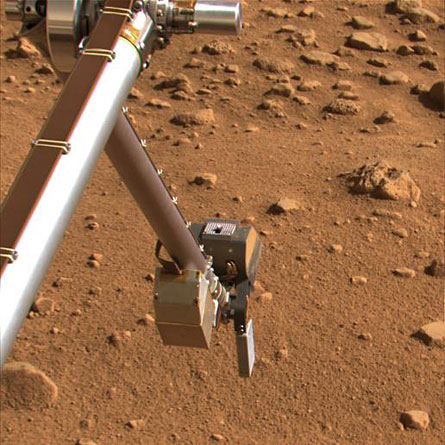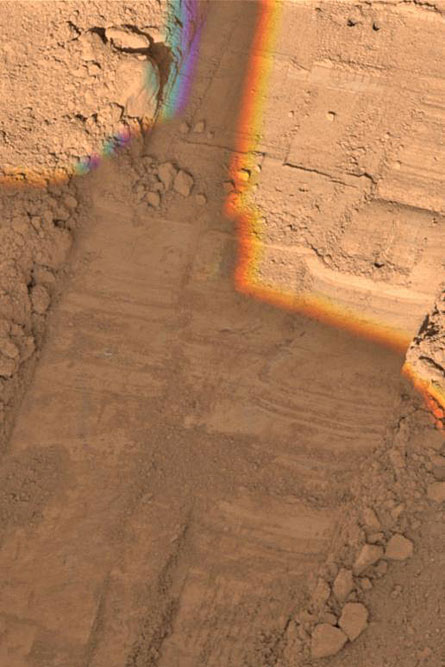Tasting ice
Phoenix Mars Lander ready to analyze ice if instruments work properly
- More than 2 years ago
Phoenix Mars Lander’s robotic arm has successfully drilled into the concrete-hard Martian soil in a trench informally known as Snow White.


Using a pinky-sized rasp, the arm loosened material that was then collected with the lander’s scoop. The NASA craft’s team is testing the rasp’s ice-drilling ability in order to prepare samples for possible analysis by Phoenix’s Thermal and Evolved-Gas Analyzer, or TEGA.
“The team is totally focused on getting a rasped-up icy sample to TEGA,” says mission specialist Ray Arvidson of Washington University in St. Louis. “We went to Mars to follow the water, and until TEGA tastes it, there will always be a doubt in some people’s minds that the planet has water ice.”
Arvidson is known as the “dig czar” and controls the robotic arm that collects samples for the lander’s instruments. He says collecting the desired icy sample is like trying to sample the sidewalk in front of his house. “The soil is that hard,” he says.
But the rasp, which looks like a tiny drill and protrudes at a slight angle from an opening on the back of the lander’s scoop, can bust through the hard Martian layer. After the rasp finishes drilling, the scoop shifts to collect and slide the shavings to the front of the scoop. In coming days, the team will instruct the arm to use the same drilling method to gather a sample to place in one of TEGA’s seven remaining ovens.
One oven was already filled with a soil sample on June 10.
The soil particles delivered to that oven were so clumpy that they clogged the sieve screen covering the oven opening. Vibrating the screen periodically during a four-day period eventually let some soil fall into and fill the oven. But engineers think the use of a motor to create that vibration may also have caused the oven to short-circuit, Arvidson says.
So, for the past two weeks the Phoenix team has suspended sending samples to TEGA because of the threat of a short circuit and also because of potential trouble with TEGA’s mechanical operations. When Phoenix scientists commanded doors for a second TEGA oven to open in mid-June, the doors only opened part way. The team later established that mechanical problems may prevent doors on that oven and three others from opening fully.
Because of these setbacks, the team wanted to plan the next sample “dig and dump” as if it was its last, Arvidson says. And, just in case there are problems with several of the ovens, the team has made testing the ice sample its first priority.
During the week of July 13, the scientists worked to ensure that they could rasp loose grains of the hard soil, scoop it and deliver it to the oven before the sample changed or, if it contains ice, melted. The entire process should take one to one and a half hours, Arvidson says.
If the oven bakes the sample without short-circuiting, the Phoenix team could have, for the first time, direct, experimental evidence that water-ice exists on Mars, he notes.







